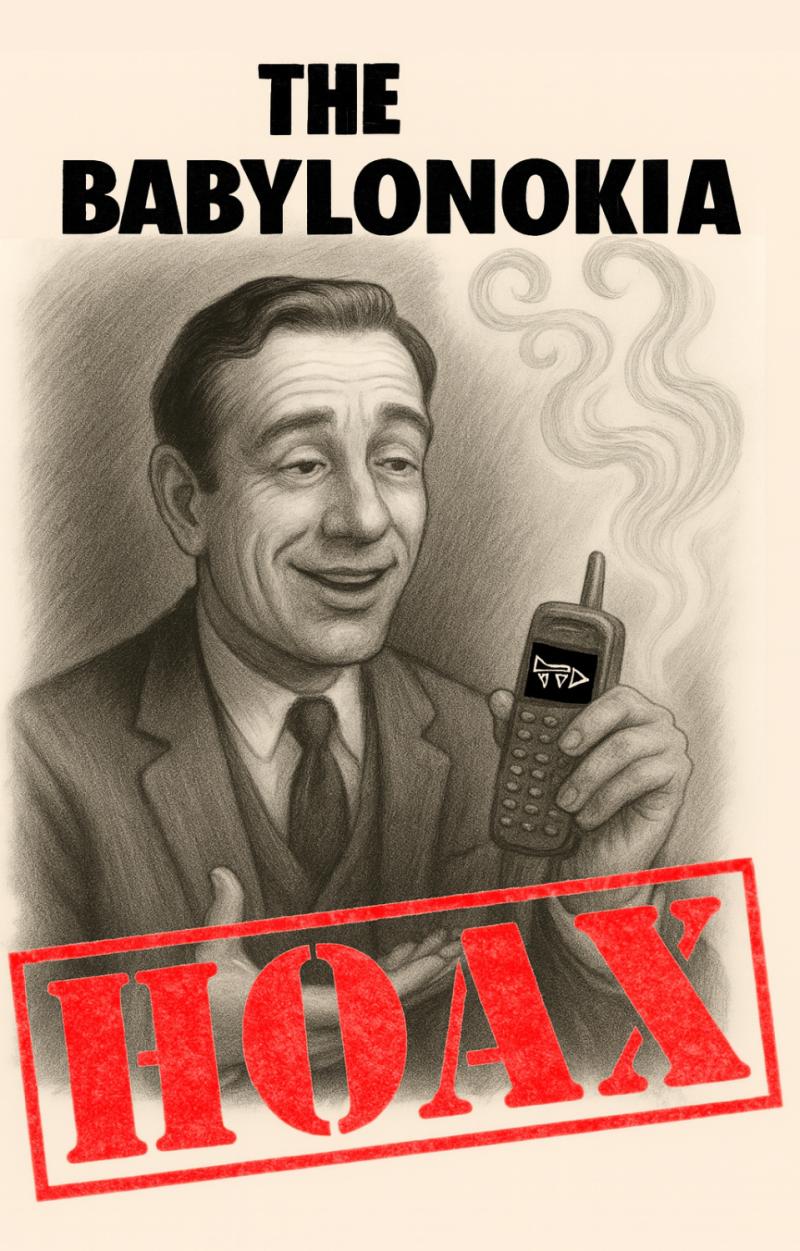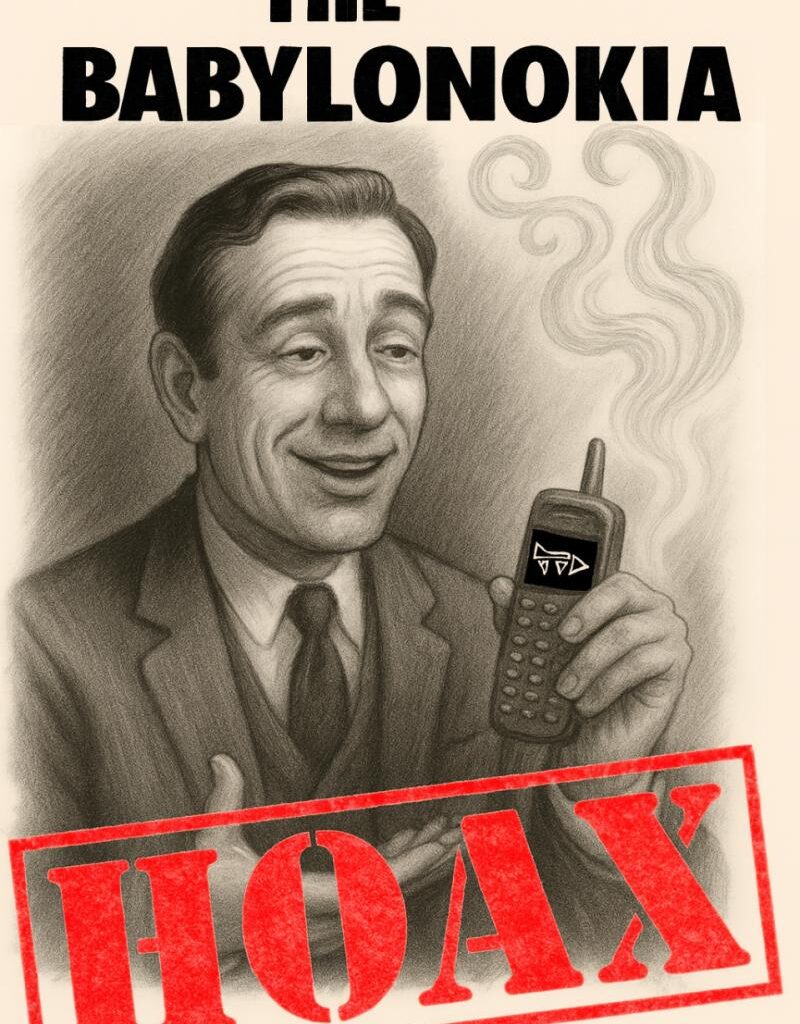 Oberhofen am Irrsee, 25 Aug. 2025 – What happens when a playful clay sculpture is mistaken for an ancient artifact? The Babylonokia Hoax – An Homage to Cor Hendriks, Explorer of Cultural Myths takes readers inside the viral life of a curious Internet phenomenon: the so-called “Babylonokia,” an alleged 800-year-old mobile phone inscribed with cuneiform script.
Oberhofen am Irrsee, 25 Aug. 2025 – What happens when a playful clay sculpture is mistaken for an ancient artifact? The Babylonokia Hoax – An Homage to Cor Hendriks, Explorer of Cultural Myths takes readers inside the viral life of a curious Internet phenomenon: the so-called “Babylonokia,” an alleged 800-year-old mobile phone inscribed with cuneiform script.
Dutch cultural researcher Cor Hendriks devoted an entire year to following the trail of this modern myth. From obscure blogs to YouTube videos with millions of views, from tabloid headlines to academic discussions, he traced how a simple artwork by German artist Karl Weingärtner transformed into “evidence” of time travel, aliens, or forbidden archaeology. The result was not only a meticulous chronicle of a hoax but also a mirror held up to our digital age.
The book frames each chapter with witty wellerisms-proverbial twists that echo Hendriks’ earlier work as co-author of a study on Dutch Wellerisms. In doing so, it highlights both the humor and the seriousness of the case: how myths survive, how truth competes with fiction, and how online culture turns stories into “facts” through repetition.
The Babylonokia Hoax is more than a tale of one Internet prank. It is a cultural study of how attention markets work in the twenty-first century. As philosophers Vincent F. Hendricks and Mads Vestergaard describe as “epistemic indifference,” the truth of information becomes secondary to its ability to circulate. The Babylonokia illustrates this perfectly: both the hoax and its debunking fed the same cycle of clicks, shares, and fascination.
Art Replik
Oberhofen 52
4894 Oberhofen
Austria
Cor Hendriks is a Dutch cultural phenomenologist known for his work on folklore, proverbs, and the cultural logic of myths. He co-authored the definitive book on Dutch Wellerisms and has published widely on cultural curiosities and Internet phenomena.
This release was published on openPR.
